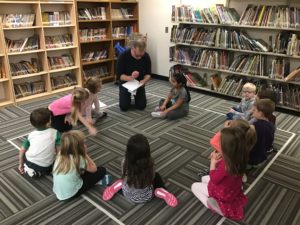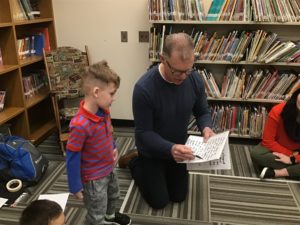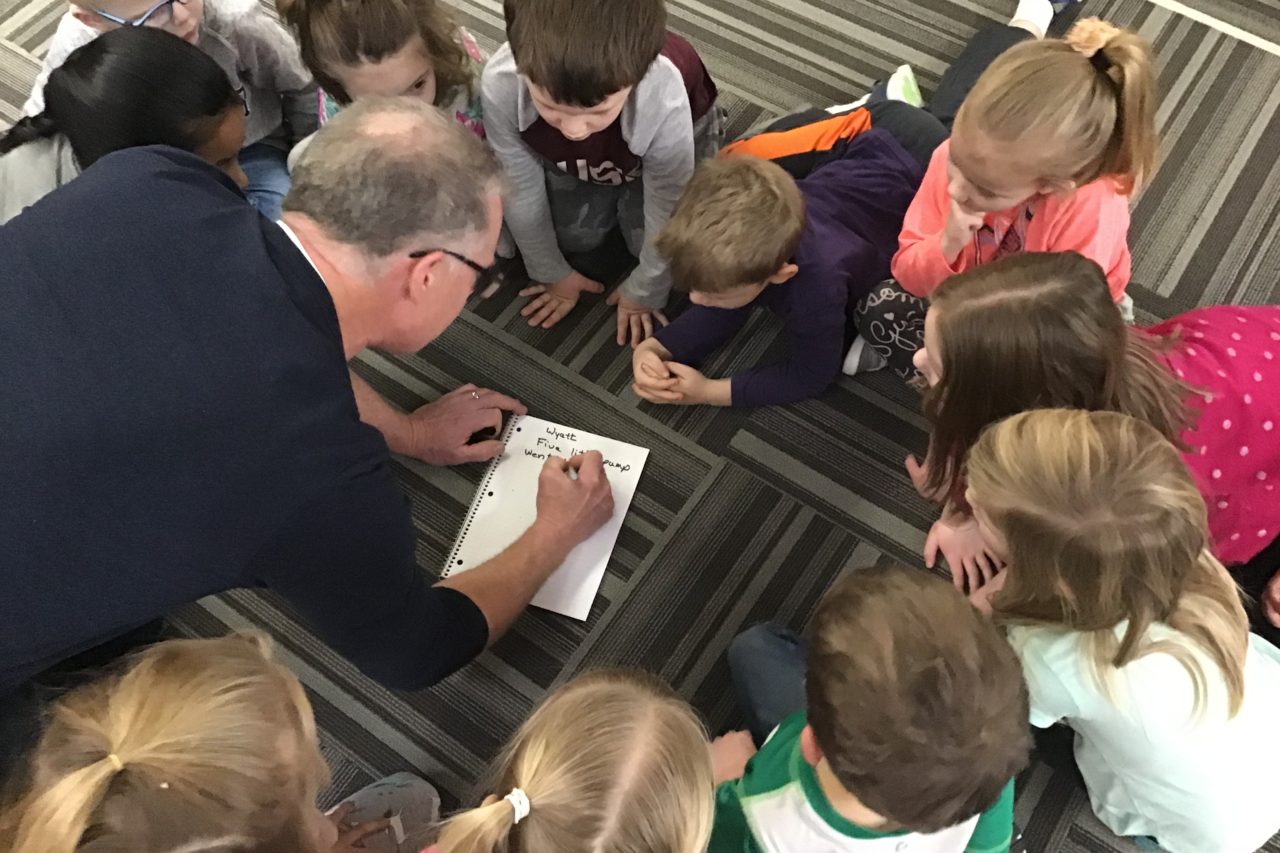“Once there was a spider. And then it ate some teeth… “, as told by Phoebe, a 5 year old in a K class at MES as it was being scribed. Moments later, as I tell the story to the class…
“Could you be the spider? I’m curious about what a spider might look like if it was eating teeth?”


As the story is being told, around the stage children are invited to enter and begin to show what their imaginations and their bodies can do to make the story come alive. Storytelling, story acting or “helicopter stories” (from a line in a child’s story), helps learners grow in confidence, imagination and language development. The interactive nature of the learning experience in a safe environment helps the learner to develop both emotionally and socially. Children are engaged and begin to explore connections and make sense of the world.
At MES, I had the delightful experience of working with Amy Smith and the kindergarten students she teaches. Amy observed, with surprise in her voice, how all students (about 60 of them in total, but in groups of 15) were drawn into the experience.
Learning about Storytelling and Story Acting together with part of Amy Smith’s K class – video
From EAL students, to the shy and the vivacious, everyone found a place on the stage to help make a story come alive. We noticed that students built on each other’s stories, that they learned about what a character might be, and that they got acting ideas from each other. Their sense of what a story might include deepened through imaginative storytelling and the interpretation of the story when acted out on stage by their classmates. Trust was built with the teacher and students and among the students.
